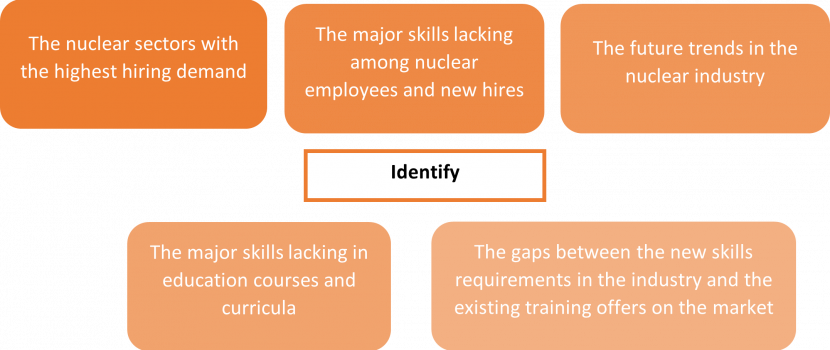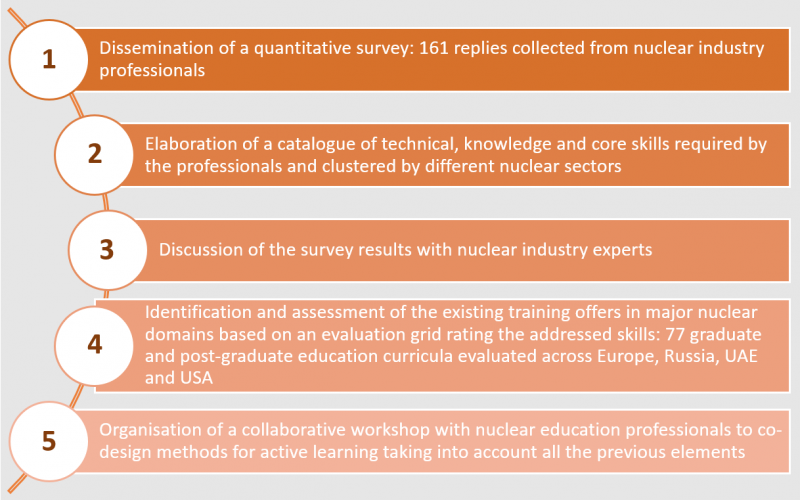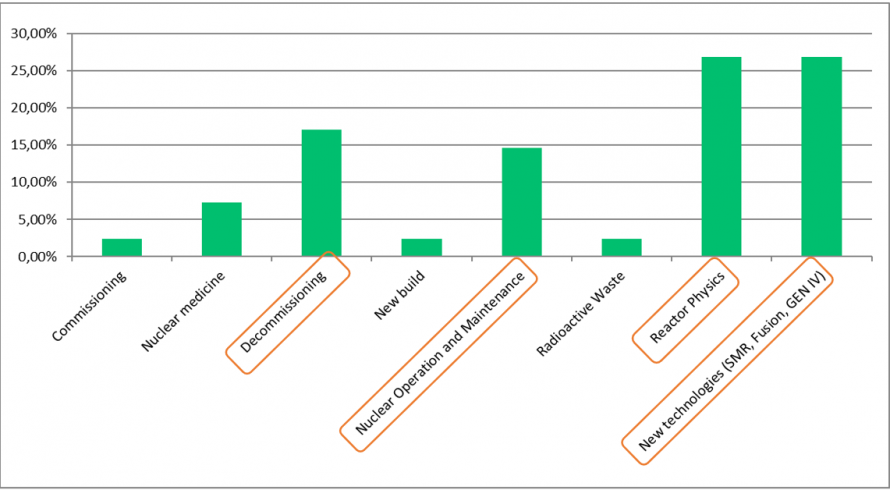While some countries are planning their nuclear phase-out by 2030 (e.g. Germany, Spain, Switzerland), many other countries are supporting the construction of new nuclear power plants (e.g. France, UK, Finland), or are seriously considering the nuclear option (e.g. Poland).
By 2050, the global nuclear generating capacity could double from 393 gigawatts (2020) to 792 gigawatts (net electrical), according to the International Atomic Energy Agency (IAEA) 2021 Outlook. This evolution faces one major challenge due the risk of losing the accumulated nuclear knowledge and expertise considering the ageing workforce and declining student enrolment and interest in the nuclear field. In the short term, nuclear industry professionals and newcomers on the job market will require adapted training and education to gain crucial skills for the safe operation and/or decommissioning of nuclear plants. Actions must be taken to strengthen the European graduate nuclear engineering education network and offer new, attractive and accessible training resources adapted to the needs of the industry.
GRE@T-PIONEeR is a Euratom project that will develop specialised education and training resources for graduate/post-graduate students and engineers in nuclear reactor physics and safety. In the frame of this project, a study was conducted by LGI Sustainable Innovation, Chalmers University of Technology, and the European Nuclear Education Network (ENEN) to examine the current state of nuclear education and the expectations from the nuclear industry, keeping the following key objectives in mind:

Figure 1: Major objectives of the study
As part of LGI’s leading role in the fulfilment of these objectives under GRE@T-PIONEeR, a methodology along the following major steps was developed:

Figure 2: Methodology steps of the GRE@T-PIONEeR mapping analysis
The study reveals that the sectors with the highest hiring demand in the nuclear industry are the following: Decommissioning, Nuclear operations, Reactor physics, and New technologies.

Figure 3: Nuclear sectors recently hired by the survey respondents’ enterprises
The analysis of the survey results and the evaluation of the nuclear education curricula revealed that some skills are ineffectively addressed by existing curricula. This lack of skills is “most critical” among current staff and job applicants, according to nuclear industry professionals. The research results highlighted that nuclear education curricula must integrate the following skills gaps in their courses and programs.

Figure 4: Critical skills to integrate in nuclear education curricula
Additionally, the education curricula assessment and discussions with nuclear education professionals during the collaborative workshop led to the identification of key recommendations for future nuclear education.
Firstly, educational courses must work on becoming closer and applicable to the labour market in order to be more concrete for students, and more effectively address industry needs. An enhanced communication between the industrial and academic worlds would benefit the entire ecosystem. By defining their accurate expectations and future needs, professionals could influence the content of the courses and enhance the employability rate at the end of the curricula.
Secondly, a culture of interaction would be valuable to bring through the immersion of students in real life situations through the organisation of virtual labs, serious games, visits, or seminars with experts.
Finally, practice, in addition to theory, is key to engage and raise students’ interest. The enhancement of practical experiences can be done through new educational techniques such as virtual reality, augmented reality, online labs, gamifications, drones, robots, etc. The implementation of active learning techniques through which students are engaged in various specifically designed activities is key to improve the efficacy of teaching/learning. While pedagogical teams are willing to use these new and innovative teaching methods, professors highlighted major barriers to their implementation and mentioned some key requirements for a concrete active learning strategy at university:
- Enhanced access to material & online resources (e.g. computer systems)
- Development of the training of professors on facilitation of the learning process
- Institutional change, with active financial and moral support from the hierarchy on the innovative teaching techniques
The lack of time available for professors to complete training in new teaching techniques and implement them and the lack of support from their superiors are major barriers. By implementing innovative ways of teaching, academics will have the opportunity to professionalise their training and address the expectations of the industry. Moreover, core skill development of students is crucial and curricula must involve elements on personal branding to build a career path.
To read the detailed findings of the study, the full deliverable GRE@T Pioneer Mapping analysis is available at this link.




